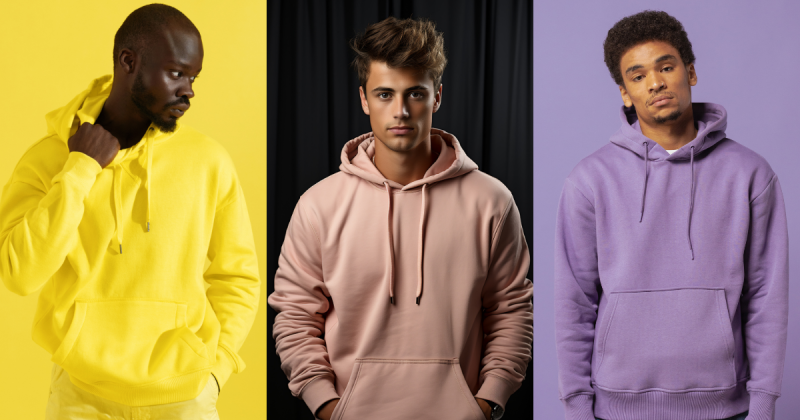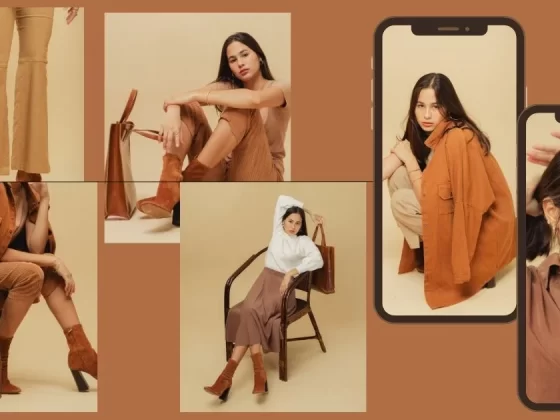Hoodies have become an essential part of every man’s wardrobe. Whether you’re lounging at home, heading to the gym, or layering up for a casual outing, the right hoodie can elevate your look while keeping you comfortable. They offer a perfect blend of style, versatility, and coziness, making them a go-to for all seasons.
However, not all hoodies are created equal. Finding the perfect hoodie involves more than just picking the first one you see on the rack. Fit, fabric, style, and quality are crucial in ensuring you get the most out of your purchase. In this guide, we’ll deeply dive into everything you need to know to choose the perfect hoodie for men.
The Importance of Fit
The right fit is everything. A well-fitted hoodie can make you look polished and stylish, while an ill-fitting one can make you appear sloppy. Here are the key aspects of fit to consider:
1. Shoulder Fit
The seams of the hoodie should align perfectly with the ends of your shoulders for a structured and polished look. If the seams extend too far past your shoulders, the hoodie will appear too large, giving an unintentionally oversized look. On the other hand, if the seams sit too high above your shoulder line, the fit will be too tight and may restrict movement. A well-fitted hoodie should naturally follow the slope of your shoulders without excessive bunching or pulling. Checking the shoulder fit ensures that the hoodie drapes well and maintains a stylish silhouette.
2. Body Length
The length of a hoodie plays a crucial role in how flattering it appears on your body. Ideally, the bottom hem should fall below your waistline, creating a balanced proportion. A hoodie that is too short may expose your torso when you raise your arms, making it impractical and uncomfortable. Conversely, a too-long hoodie can look awkward, significantly if it extends well past your hips, making you appear shorter. Choosing the right body length enhances comfort and style, ensuring the hoodie looks intentional rather than sloppy.
3. Sleeve Length
The sleeves of a hoodie should reach just to your wrist when your arms are relaxed at your sides. If the sleeves are too short, they may feel restrictive and expose your wrists, making the hoodie unsuitable for colder weather. On the other hand, sleeves that are too long can make the hoodie look oversized and unkempt, often leading to unnecessary bunching around the wrists. Some hoodies feature ribbed cuffs that help keep the sleeves in place, preventing them from sliding up or down. The proper sleeve length ensures comfort and practicality, allowing easy movement without compromising style.
4. Chest Fit
A well-fitting hoodie should offer a comfortable yet structured chest fit, allowing for movement without feeling overly loose. If the chest area is too tight, it can restrict mobility and create an unflattering, squeezed look. Conversely, if the hoodie is too loose in the chest, it can have a baggy appearance that lacks shape and definition. The best fit should gently contour your upper body while leaving room for comfort and layering. Checking the chest fit is essential for achieving a stylish hoodie that feels great throughout the day.
5. Room for Layering
Layering is essential when selecting a hoodie, especially if you wear it over t-shirts or under jackets. A too-tight hoodie may not accommodate additional layers, making it uncomfortable for colder weather. However, choosing a hoodie that is excessively loose for the sake of layering can lead to an unflattering, oversized look. The best option is to find a balance—enough room to fit a base layer without compromising the hoodie’s shape. Testing how the hoodie fits over different clothing items ensures versatility in various weather conditions.
6. Know Your Measurements
Before purchasing a hoodie, it is essential to know your exact measurements to find the perfect fit. Measuring your chest, shoulders, and sleeve length will help you compare with the brand’s size chart to avoid sizing mistakes. Since hoodie sizing can vary between brands and styles, relying on measurements rather than general size labels ensures a better fit. Trying on different sizes or checking reviews for size recommendations can also help you make an informed decision. Taking accurate measurements prevents the hassle of returns and ensures you get a hoodie that fits comfortably and stylishly.
Hoodie Styles
Not all hoodies serve the same purpose. Depending on your lifestyle and preferences, you may opt for different styles. Here are the most common types:
- Classic Pullover Hoodie: A timeless favorite, the pullover hoodie features a kangaroo pocket and an adjustable drawstring hood. It’s perfect for casual wear and provides a relaxed, cozy fit.
- Zip-Up Hoodie: Zip-up hoodies offer versatility since they can be worn open or closed. They’re ideal for layering and allow better temperature control.
- Performance/Athletic Hoodie: Made with lightweight and moisture-wicking materials, these hoodies are designed for workouts and outdoor activities. They provide breathability and flexibility, making them ideal for an active lifestyle.
Fabric Choices
The fabric of a hoodie determines its comfort, durability, and overall look. Here are the most common materials used:
- Cotton: A classic choice, cotton hoodies are soft, breathable, and comfortable. They work well for everyday wear and are gentle on the skin.
- Polyester: polyester hoodies are durable, wrinkle-resistant, and retain their shape over time. They are ideal for athletic wear and can withstand frequent washing.
- Fleece: Fleece hoodies are exceptionally warm and cozy. They provide excellent insulation, making them perfect for colder months.
- Wool: Wool hoodies offer a more refined, sophisticated look. They provide warmth and are great for layering during winter.
- Blended Fabrics (e.g., Cotton-Polyester): Cotton-polyester blends provide soft durability. They are less prone to shrinking than 100% cotton and are ideal for everyday use.
- Choosing the Right Fabric: Consider your lifestyle when selecting a hoodie fabric. If you prioritize comfort, opt for cotton. If durability is your main concern, go for polyester or blends.
Quality Considerations
Investing in a high-quality hoodie ensures longevity and a better overall experience. Here’s what to look for:
1. Stitching
Check the seams of the hoodie to ensure they are even, tight, and securely stitched. High-quality stitching prevents unraveling and ensures the hoodie maintains its shape over time. Loose threads or uneven seams are signs of poor craftsmanship and may lead to faster wear and tear. Inspecting the stitching closely before purchasing can help you avoid low-quality hoodies that might not last long.
2. Fabric Quality
A well-made hoodie should feel soft to the touch while still having a substantial weight. Thin or flimsy fabrics lose shape and become worn out after a few washes. High-quality materials provide durability and comfort, making the hoodie a long-lasting wardrobe staple. Choosing a fabric that balances softness and durability will ensure maximum comfort and longevity.
3. Drawstrings
The drawstrings of a hoodie should be firmly attached to prevent them from slipping out or fraying over time. High-quality hoodies often have reinforced eyelets and strong stitching around the drawstring holes. Metal aglets at the ends add durability and prevent fraying, making the hoodie look more polished. Ensuring the drawstrings are well-made will keep them functional and looking good for longer.
4. Hardware (Zippers)
If you prefer a zip-up hoodie, always check the zipper’s quality before purchasing. A good zipper should glide smoothly without snagging or sticking, ensuring ease of use. Sturdy metal zippers tend to last longer and perform better than plastic ones. A well-constructed zipper ensures convenience and durability, making your hoodie more reliable.
5. Washing Durability
A high-quality hoodie should retain its shape, softness, and color even after multiple washes. Cheap fabrics shrink, fade, or lose texture quickly, making them look worn out. Preshrunk fabrics or those with unique treatments help minimize shrinkage and maintain their original fit. Choosing a hoodie with strong fabric durability ensures it stays comfortable and stylish for years.
Color Selection
Color plays a significant role in how versatile your hoodie is. Here’s how to pick the right shade:
1. Skin Tone Consideration
- Darker skin tones can confidently wear bold, vibrant colors.
- Lighter skin tones may look better in softer, neutral tones.
2. Neutral Colors for Versatility
Black, gray, navy, and white are timeless choices that pair well with any outfit. If you want a hoodie that matches everything, stick to these colors.
3. Statement Colors for Bold Looks
If you prefer to stand out, use brighter colors like red, mustard, or forest green.
Additional Features to Consider
Beyond fit and fabric, certain features can enhance the functionality of your hoodie:
- Hood Drawstring: An adjustable drawstring allows you to tighten or loosen the hood for a customized fit.
- Pockets: Kangaroo or zippered pockets provide a place to keep your hands warm or store essentials.
- Zippers: A zip-up hoodie offers better layering options while a pullover hoodie provides a cleaner look.
- Cuffs and Hem: Elastic or ribbed cuffs and hems help keep the hoodie in place and prevent cold air from getting in.
Hoodie vs. Sweatshirt: What’s the Difference?
Though often used interchangeably, hoodies and sweatshirts have distinct differences:
- Hoodies typically have a hood and may feature a zipper. They offer more versatility in style and function.
- Sweatshirts are usually thicker and do not have a hood. They are ideal for colder weather and provide a more classic, sporty look.
While both offer comfort, hoodies provide added warmth and protection against wind and rain.
Finding the Perfect Hoodie for Men
To summarize, here’s how to ensure you get the perfect hoodie:
- Know Your Size: Measure your chest, shoulders, and sleeve length.
- Refer to Size Charts: Different brands may have varying sizing, so always check before purchasing.
- Try It On: If possible, try different sizes to see what fits best.
- Aim for Comfort: Your hoodie should feel relaxed but not oversized.
- Layering Considerations: If you wear it over other clothing, size down slightly.
Finding Your Perfect Hoodie
Hoodies are one of the most versatile pieces in a man’s wardrobe. Whether you’re dressing up or down, they offer a combination of comfort and style that is hard to beat. When selecting the perfect hoodie, consider the fit, fabric, style, and additional features to ensure it meets your needs. A well-chosen hoodie can be a long-term investment that adds function and fashion to your everyday outfits. So the next time you’re shopping for a hoodie, remember this guide. You’ll be well on your way to finding a hoodie that feels great, looks stylish, and lasts for years.








